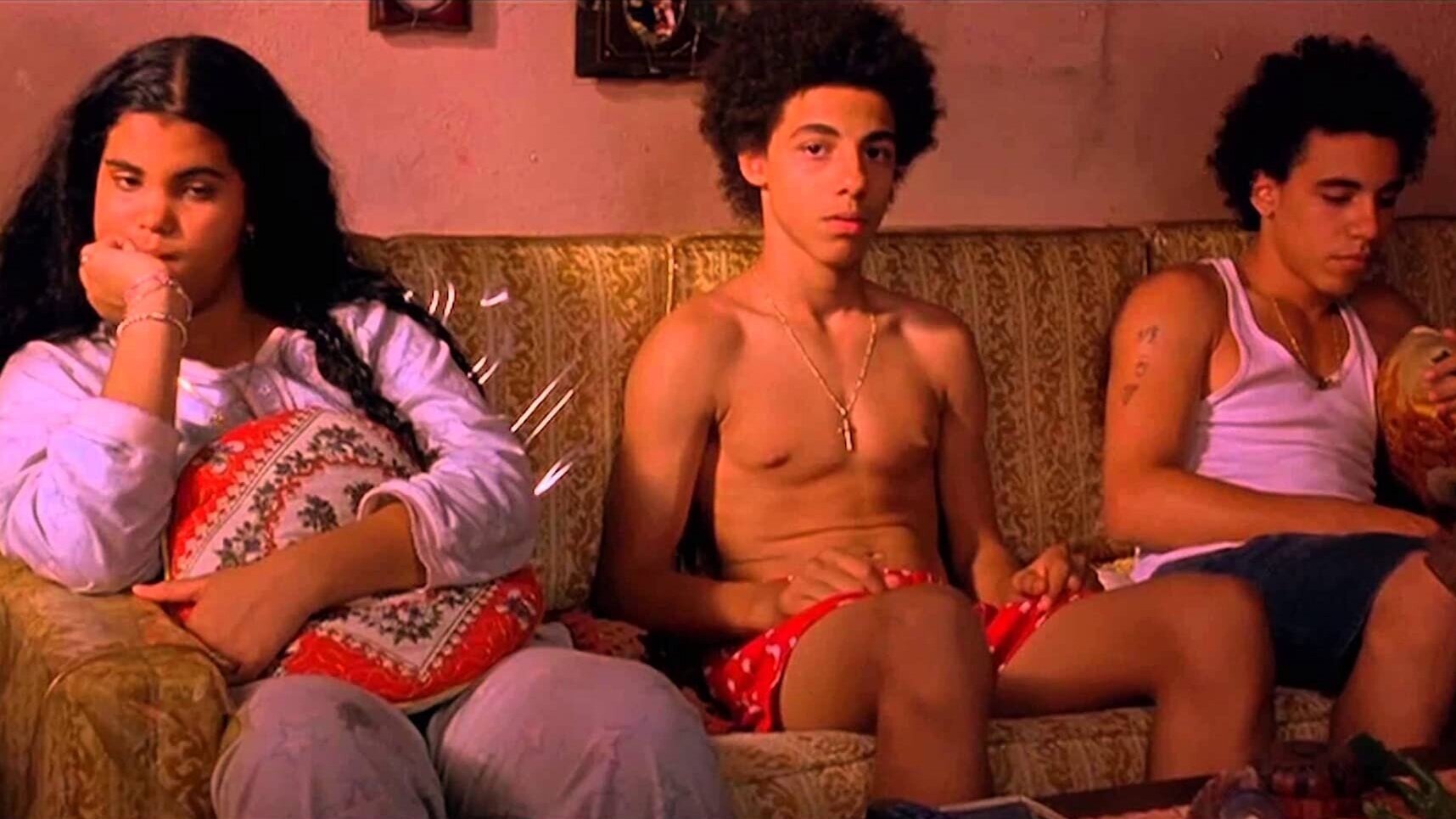The following is as much a review of the original short film as it is for the feature.
A Compromised Revision
Raising Victor Vargas improves upon many of the shortcomings of the short it was based on, “Five Feet High and Rising,” while also losing some of its more charming and immediately impressive qualities. “Five Feet High” was director Peter Sollett’s senior thesis film at NYU undergrad film, and its production history has been oft retold not only because of the film’s ultimate success but also because of Sollett’s unique approach to casting and various difficulties behind the scenes. Sollett cast the original short entirely from actual Lower East Side youth, almost all of whom were completely inexperienced in front of the camera. Even if that wasn’t already ambitious enough, he also sought a documentary style, handheld close-ups—something in the vein of Cassavetes for example. For whatever reason, be it the distraction of the other numerous concerns with this complicated production or miscommunication of Sollett with his creative team, a good number of the shots in the original short were underexposed. Nevertheless, the film was finished, and went on to do well at Sundance, Cannes, and SXSW.
There’s a real raw quality to the original short. Some of it unintentional, like the aforementioned underexposure—very evident during the conversation by the pool—but generally sought after, particularly in performance and writing. The dialogue is smart and always moving the loose narrative forward, but the inclusion of mumbling, odd uncontextualized remarks, regional slang, and repetitions keep the world of “Five Feet High” bubbling with life. Everyone feels like they’re playing themselves, and I would assume for the most part, especially with the side characters, they are. The key for casting this type of film is finding distinct personalities and making sure they aren’t camera shy—Sollett definitely found the right group of kids.
While watching Raising Victor Vargas, what immediately jumps out as a distinct contrast with the short film is the increased expertise of the camerawork. Having had no DP on the short, Sollett hired Tim Orr who had just started making his name in the indie scene with David Gordon Green’s George Washington. The feature looks almost like a different format than the short. Both are super-16, but the short suffers from the underexposure and most likely a lackluster telecine while the feature looks closer to 35mm. I was consistently reminded by Do the Right Thing for not only the filmmaking style but also of course the similar New York culture and the familial conflict. Spike Lee’s film is known for its intense warm color grade, and Sollett seems to employ a similar grade here.
Another large improvement over the short is the development of Judy, Victor’s love interest. She’s a character of complete mystery in the original, fitting of the younger Victor’s naive perspective. On the other hand, the feature incorporates her reasoning of initially not engaging with Victor and her overall apprehension with men. She has a complicated relationship with her friend Melonie who, unbeknown to Judy, is much more interested than her in having a relationship with a man. Judy is grappling with her own sense of independence at the same time as Victor struggles to find his footing within his little grandma-led family at home.
Given that the feature is a feature rather than a university thesis film, I’d expect these things I’ve gone over so far—Sollett had a longer runtime, so better character development is a given, and he had a larger budget which helped lessen the general shoddiness of the camerawork and film processing. The disappointment then becomes what is lost in Raising Victor Vargas that was part of what made “Five Feet High and Rising” so special: the feeling of spontaneity. The feature has a wittiness about it, a formal cohesion, that makes it feel more like a movie, something the short avoided. Like I mentioned previously, the feature reminds me more of Do the Right Thing for this reason, but Lee’s film throws itself head first into the staginess, the color, the fairy tale while Sollett stops short. Raising Victor Vargas is in this weird middle ground where it wants to stay true to the honesty and raw power of the original short while also getting to play with the big kids.
I think given the same exposure, in time, the short will be better remembered than the feature. The short reminds me more of another film that came out just a few years after Lee’s film—Paris is Burning. A documentary (or pseudo-documentary), a slice of life, something very immediate and striking. Not a film that, although culturally rich and a serviceable sexual-awakening-focused Bildungsroman, is so safe. Maybe his actors ended up too comfortable in front of the camera.

